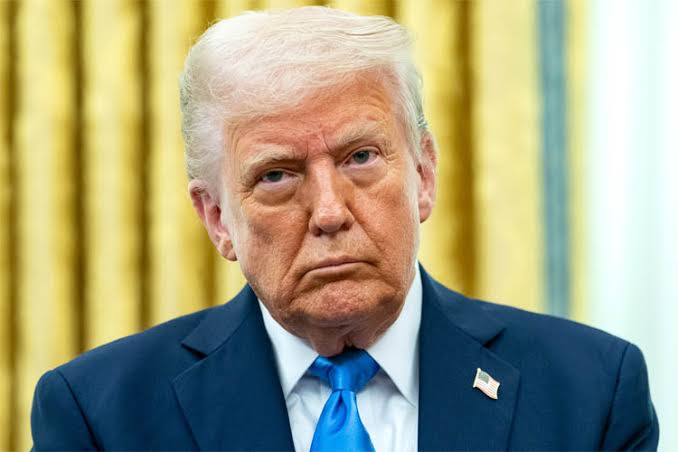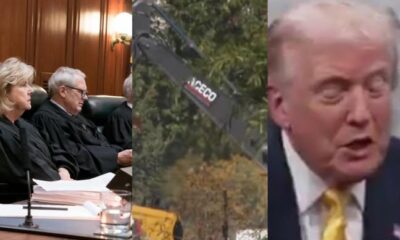CELEBRITY
BREAKING: The Supreme Court Issues Emergency Injunction Blocking President Trump From Using a Single Dime of Taxpayer Funds to Pay ACECO’s Unpaid Demolition Balance and Compensation After the Company’s Court Victory

In a stunning late-night development that has sent shockwaves through Washington, the Supreme Court has issued an emergency injunction barring President Trump from using even a single dime of taxpayer money to cover ACECO’s unpaid demolition balance or the compensation the company won in court. The decision, delivered by the Court’s emergency docket just moments before the administration was reportedly preparing to authorize a release of funds, instantly freezes the White House’s plan and raises urgent questions about executive authority, government spending, and the limitations placed on presidential power during ongoing litigation.
According to officials familiar with the situation, the Trump administration had been exploring ways to settle the long-disputed costs owed to ACECO, a demolition and environmental services company that recently secured a legal victory affirming that the federal government was responsible for outstanding payments related to a complex demolition contract. For months, ACECO had argued that it carried out its work under federally approved terms and was left with millions in unpaid balances after political infighting stalled reimbursements. A federal court eventually sided with the company, ruling that compensation was due, but the mechanism for payment—especially under intense political scrutiny—remained unclear.
With pressure building from contractors, workers, and states concerned about federal reliability, insiders say the administration had begun quietly preparing to draw from general taxpayer funds as a temporary measure while appeals continued. But the Supreme Court’s sudden intervention has made that impossible for now, creating a legal brick wall that the White House cannot climb over without further judicial review. The injunction does not overturn the lower court’s ruling; instead, it freezes any use of public money until the justices decide whether to take up the case formally or allow the appeals process to unfold.
The decision is already reshaping political narratives, with critics accusing President Trump of attempting to bypass standard budgetary processes and supporters insisting that the administration was simply trying to honor a lawful financial obligation. People close to the matter say the White House saw the payment as a necessary step to prevent further penalties and to avoid the appearance that the government could walk away from contractual debts. The Supreme Court’s order, however, signals that the question is larger than repayment—it touches the very heart of executive power and the boundaries of emergency spending.
Legal scholars are describing the injunction as a significant moment in the ongoing tug-of-war between the judicial and executive branches. Emergency injunctions involving federal spending are extremely rare, especially when tied to contractor disputes rather than national security or constitutional crises. The Court’s move suggests that at least some of the justices believe the administration may have overstepped or attempted to act without sufficient congressional authorization. While the full opinion explaining the injunction has not yet been released, the tone of the order hints at deep concern about the administration’s legal justification for tapping taxpayer funds without prior budget approval.
Inside ACECO, the reaction has been one of frustration and disbelief. After years of delays and litigation, company executives had hoped that the court ruling in their favor would finally deliver closure. Many employees believed the administration was on the verge of ending the dispute once and for all. Instead, the company now finds itself in a new kind of financial limbo—victorious on paper but still unpaid, with no clear indication of when or how the government will fulfill its obligations. Staff members who spoke anonymously say morale has been shaken, and some worry that smaller subcontractors who supported ACECO on the project may face financial strain if the freeze lasts too long.
Meanwhile, political strategists are already dissecting how the decision will play out in the public arena. Opponents of the president are framing the injunction as proof that even the highest court in the country is wary of how taxpayer money is being handled. Loyalists argue that the ruling is procedural, not ideological, and insist that the administration remains committed to acting within the law. Still, the optics of the Supreme Court stepping in to stop the government from spending money—even for a court-affirmed debt—have amplified tensions in an already polarized political climate.
For now, all eyes are on the White House’s next move. The administration could attempt to identify a different funding source, appeal directly to Congress for a targeted appropriation, or challenge the injunction when the Court provides more detail. What remains certain is that the Supreme Court has effectively slammed the brakes on a decision the president seemed ready to execute, sending a clear message that emergency financial authority has limits and that the judiciary will enforce those limits when necessary.
With ACECO still waiting, the administration recalibrating, and the legal world buzzing, the nation now enters a period of uncertainty where the final outcome rests not in the hands of contractors, politicians, or accountants, but with a bench of nine justices who have signaled that they intend to look very closely at the boundaries of presidential spending power. The ripple effects of this confrontation could shape not only the future of this specific dispute but also the broader landscape of how presidents use taxpayer dollars during moments of legal or political pressure.



















